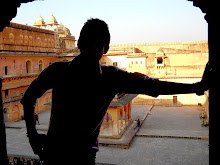Dance does not leave behind clearly identifiable physical artefacts such as stone tools, hunting implements or cave paintings. It is not possible to say when dance became part of human culture. Dance has certainly been an important part of ceremony, rituals, celebrations and entertainment since before the birth of the earliest human civilizations. Archeology delivers traces of dance from prehistoric times such as Egyptian tomb paintings depicting dancing figures from circa 3300 BC and the Rock Shelters of Bhimbetka paintings in India.
One of the earliest structured uses of dances may have been in the performance and in the telling of myths. It was also sometimes used to show feelings for one of the opposite gender. It is also linked to the origin of "love making." Before the production of written languages, dance was one of the methods of passing these stories down from generation to generation.
Another early use of dance may have been as a precursor to ecstatic trance states in healing rituals. Dance is still used for this purpose by many cultures from the Brazilian rainforest to the Kalahari Desert.
Sri Lankan dances goes back to the mythological times of aboriginal yingyang twins and "yakkas" (devils). According to a Sinhalese legend, Kandyan dances originate, 2500 years ago, from a magic ritual that broke the spell on a bewi

No comments:
Post a Comment